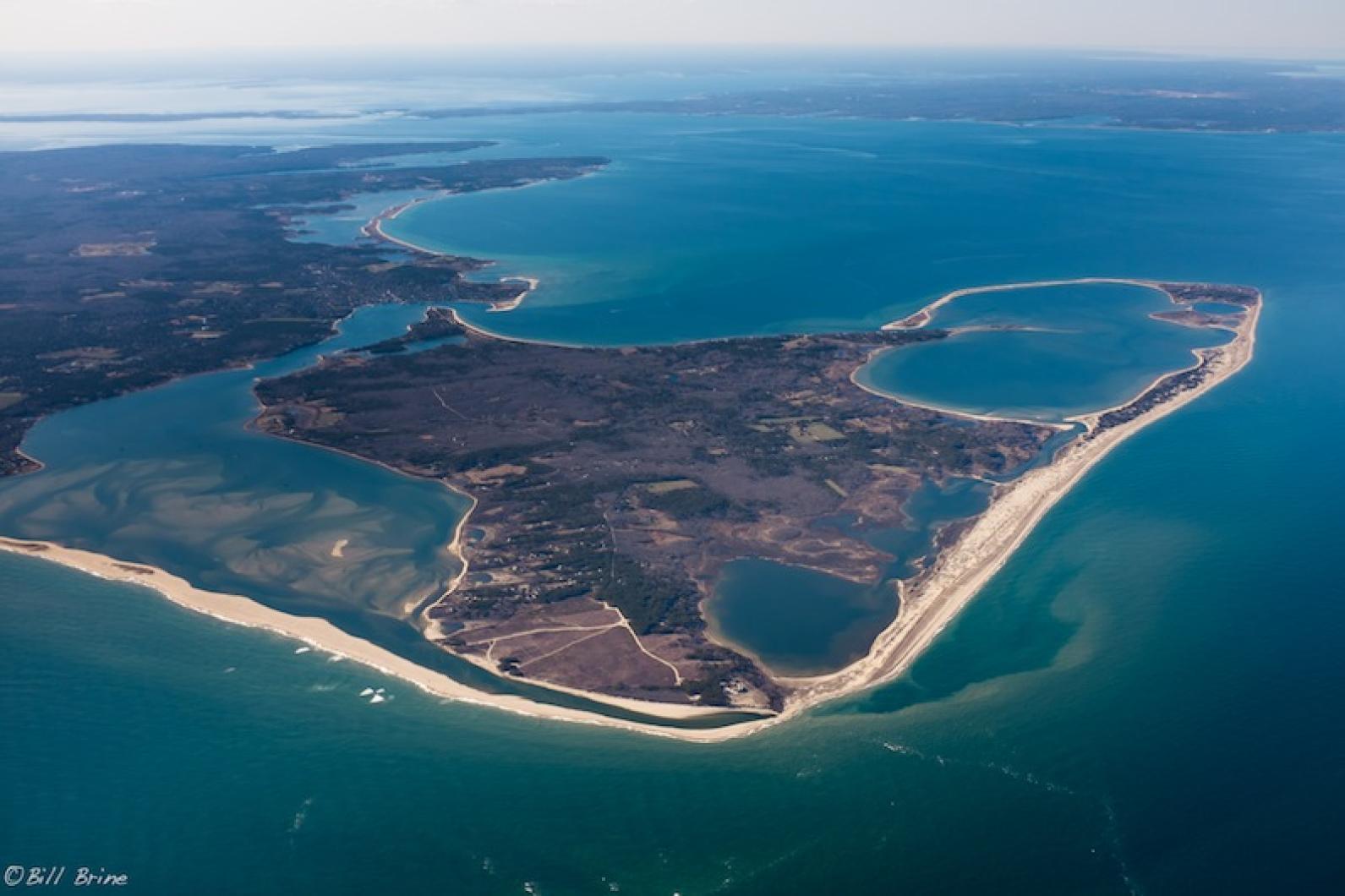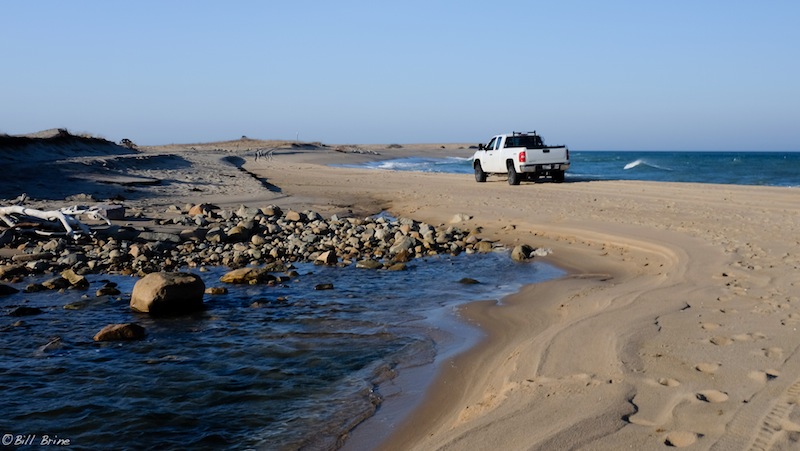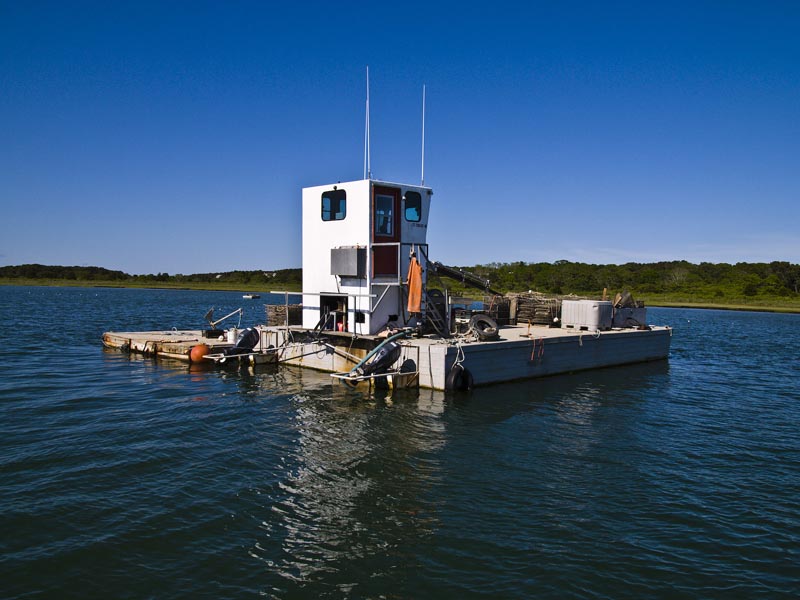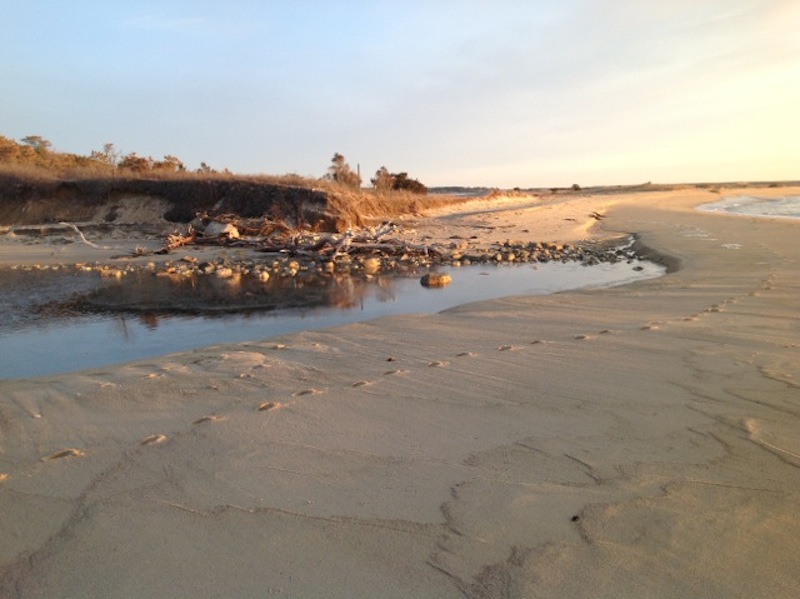The closure of the Norton Point breach on Chappaquiddick after eight years will likely benefit oyster farms and shorebirds in one of the Island’s most pristine natural environments, several experts said this week.
A long channel of salt water had completely separated Norton Point Beach from Wasque Point at the southeastern tip of Chappaquiddick, following a northeaster that struck the Island eight years ago this week. The storm tore through the barrier beach, which didn’t fully heal until this month, when a narrow strip of sand finally appeared, reconnecting Chappy to the mainland.
The breaches are a natural part of the Island ecosystem, occurring at irregular intervals, and the closures bring a mix of benefits and disadvantages. But several people familiar with the area said that on balance the closure will benefit the Katama Bay fishery and the nesting shorebirds that arrive on the beach each spring.
Edgartown shellfish constable Paul Bagnall was in high school in the early 1970s when a previous Norton Point breach closed after a period of about 17 years. As a result of that closure, he said, the shellfish in Katama Bay became more densely established, especially quahaugs and softshell clams, and the oysters grew faster.
“That’s what I’m hoping will happen again,” Mr. Bagnall said this week. “Katama desperately needs a set of steamer clams right now, and quahaugs would be helpful too.” He added that hardshell clams and steamers from here to Gloucester have been in decline for the last few years.
One prediction is that with the slower currents, fewer of the young shellfish will be swept away. “We go from a two and a half-knot current to about a half-knot current,” and water stays in the bay longer when the breach is closed, Mr. Bagnall said.
Jack Blake, owner of Sweet Neck Farm, one of 12 oyster farms in Katama Bay, noted that the algae would also stay in the pond longer. “It just multiplies down there and it gets quite dense,” he said. “So the oysters have plenty to eat.” He also expected the oysters to taste sweeter, as they have during previous closures, possibly as a result of different algae species taking hold.
In general he expected the closure to improve the bay fishery. “In the past it always has,” he said.
But the fishery is already doing well, with each of the 12 farms producing between 100,000 and 500,000 oysters annually. In a good year Sweet Neck Farm produces about 200,000 oysters on its one-acre plot, and Mr. Blake didn’t expect that number to change, mostly because he was already working at capacity.
The benefits of the closure are weighed against the benefits of the opening, which included the washing away of silt and nitrogen. But the faster currents were sometimes a problem for farmers. “The currents were much stronger and it was just more difficult to work on the farm,” Mr. Blake said.
Perhaps the biggest concern is how the changes might affect the bacterial pathogen Vibrio parahaemolyticus, which is carried by shellfish and can cause illness in humans. At the height of summer, the bay is typically about two degrees warmer than Edgartown harbor, providing a better habitat for bacteria.
“We don’t know what the effects of the closed bay will be on that,” Mr. Bagnall said, adding that the risk may actually have been greater before, since the higher flow of water may have increased exposure to the bacterium. Last year, four cases of Vibrio were traced back to the bay.
Oysters are harvested year-round, and the warmer temperatures may extend the summer growing season up to three weeks, Mr. Blake said: “It will get warmer quicker and stay warmer longer.”
With slower circulation, the bay will also be more susceptible to nitrogen loading from septic tanks, fertilizer and runoff, which could lead to algae blooms and the loss of light-dependent eelgrass, which provides habitat for scallops. But there is relatively little development on Chappaquiddick, and having a northern opening to Vineyard Sound is a distinct advantage for the bay.
“A lot of the basins on the south shore of the Vineyard have to be manually opened,” said Brian Howes, technical director of the Massachusetts Estuaries Project. “So compared to those, Katama is in much better shape.” The MEP has issued reports on about half of the estuaries on the Vineyard and hopes to complete studies on Katama Bay, Cape Pogue Bay, Poucha Pond and Edgartown Harbor.
Cape Pogue Bay, also situated in Chappaquiddick, is widely regarded as among the healthiest ponds on the Island. “That’s what we compare everything else to, because the numbers always come out so great,” said Edgartown harbor master Charlie Blair. Cape Pogue yielded 8,628 bushels of scallops last year, far more than any other fishery on the Island.
But Mr. Blake noted that Katama Bay has seen a drastic decline in eelgrass over the years. “The big variable down there is will the eelgrass come back,” he said. “That’s always the big question.”
A lack of eelgrass means fewer scallops, although Mr. Bagnall predicted that more scallops would appear now that the breach is closed.
Shorebirds will likely benefit from the closure as well, since the eastern shore of Chappaquiddick is an ideal nesting habitat, with relatively little beach grass and mix of sand and stones.
Chris Kennedy, superintendent of the Martha’s Vineyard Trustees of Reservations, which maintains much of the land on Chappaquiddick, expected to continue seeing “sizable numbers” of least terns, piping plovers, black skimmers, American oyster catchers and other shorebirds, as he has during the past several years.
He also predicted that if overwash continues to fill in the narrow cove near Wasque Point, a small salt pond might form, like the one in the 1960s that was home to nesting swans. “If it closes off and we have vegetation beginning to resprout along the edges, as I’m sure we will, it would probably be at that point that we’d have geese and swans begin to try and nest again,” he said.
The new strip of sand connecting Wasque Point to the barrier beach has persisted for about three weeks, and while it continues to wash over during high tides and heavy winds, Mr. Kennedy believed it was stabilizing. But Mr. Blair wasn’t so sure, arguing that the area of beach to the west, where the 2007 breach occurred, remains vulnerable. “One good storm could change everything,” he said.










Comments (2)
Comments
Comment policy »